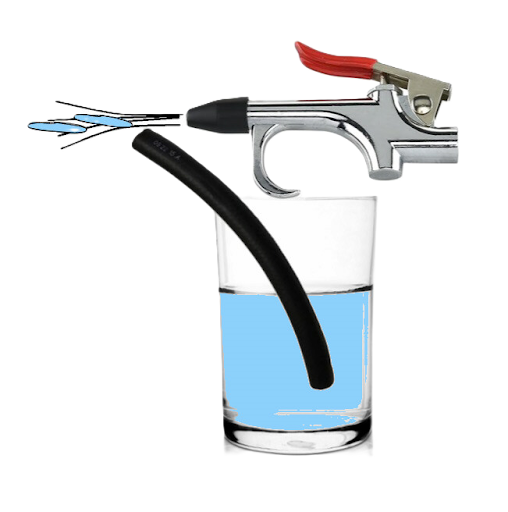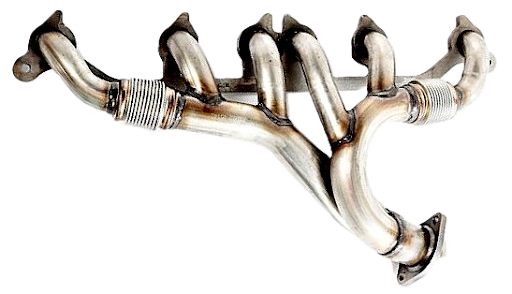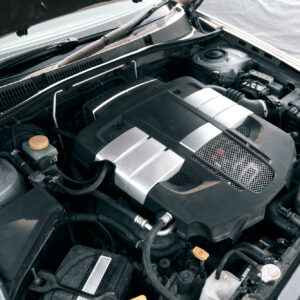If you’re interested in getting more performance out of your vehicle, you should consider replacing its intake manifold with an exhaust header. An exhaust header can give your vehicle more horsepower and better sound without tweaking its engine.
In this article, we’ll discuss exhaust headers, their purpose, and how upgrading them can improve your vehicle’s performance.
What Are Exhaust Headers?

Exhaust headers are the set of pipes that carry exhaust gases from where they leave the engine’s cylinder head to other exhaust system components like the catalytic converter and muffler.
Despite serving the same function, exhaust headers are different compared to exhaust manifolds. Both headers and exhaust manifolds are pipes that carry gases out of each cylinder to a larger pipe where all the gases from all the cylinders are combined.
Your vehicle’s engine expels gas in strong pulses. If you put your hand close to the exhaust tip when your engine is idle, you can feel the individual pulses of each cylinder releasing its exhaust gases. Exhaust headers have long and wide pipes that allow exhaust gases from each cylinder to preserve this high-pressure wave before the gases are funneled together.

Meanwhile, exhaust manifolds only have small inlets instead of large pipes. Unlike exhaust headers, these inlets aren’t very long and they immediately funnel to a larger pipe, which creates a bottleneck effect and neutralizes some of the high-pressure wave.
Many new vehicles are typically equipped with header-like exhaust manifolds rather than cast iron exhaust manifolds because cast iron exhaust manifolds are a lot heavier than headers and weight is a big deal to engineers.

Older style exhaust manifolds are constructed with a single piece of cast iron, which means that they’re made by pouring molten metal into a mold. Meanwhile, exhaust headers and steel exhaust manifolds like the one shown are made from steel tubes, which make them lighter.
Benefits of an Exhaust Header Upgrade
More Engine Power
The longer pipes found in headers significantly affect exhaust gas flow dynamics and significantly reduce the amount of back pressure, the resistance that your engine needs to overcome to pump out these.
Older style stock exhaust manifolds create more back pressure because the short inlets create a bottleneck for the gases. Upgrading to a header reduces back pressure and gives your vehicle more power.
Since headers preserve the high-pressure wave from the combustion chamber, the pipes can produce a scavenging effect, which is a negative pressure wave that immediately follows the high-pressure pulse. This negative pressure helps suck exhaust gases from the cylinder and helps the engine suck more air into the combustion chamber, which can result in more power.
How much horsepower do exhaust headers add? With the combined effects of decreased back pressure and the scavenging effect, an engine can get a 5% boost in horsepower, depending on the vehicle setup.
Better-Sounding Exhaust
A header upgrade can also have a significant impact on the engine’s sound, depending on a header’s tubing specifications. Wider tubes can create a deep and throaty exhaust note, while narrower tubes can create a higher-pitch exhaust sound. The header’s material also influences the vehicle’s sound. Stainless steel makes a clean and smooth-sounding exhaust note. Meanwhile, steel headers resonate differently, which results in a deeper tone. Aside from better-quality sound, headers can also make the vehicle’s exhaust sound louder.
Improved Fuel Economy
Improving exhaust gas flow and reducing exhaust back pressure can also have a modest effect on a vehicle’s fuel efficiency. However, this small effect can result in significant gas savings in the long run for high-performance engines like V8s, which are notorious gas-guzzlers.
Potentially Better Engine Lifespan
Less engine backpressure means your engine and its components will be under less stress, which means a longer lifespan.
Things to Note Before Upgrading Your Vehicle’s Headers
Exhaust headers do bring many benefits, but they’re also noticeably bulkier than a vehicle’s stock exhaust manifold. This means some headers might not be compatible with your vehicle.
You should check the clearance underneath your vehicle’s engine compartment and determine whether you can even replace your exhaust manifold. Sometimes, you might need to remove or relocate other components to fit new headers. Lowered vehicles might have problems fitting aftermarket headers because of their engine’s proximity to the ground.
Installation can also be challenging since it involves accessing your vehicle’s undercarriage and installing a long section of pipes.
Upgrading your vehicle’s headers can also affect your vehicle’s ability to comply with emissions standards. Header upgrades are generally legal as long as your vehicle complies with local emissions laws. You’ll need to reconnect the headers to the rest of your vehicle’s exhaust system and catalytic converter.
If you live in a state with strict emissions standards, you must be careful. A header upgrade can compromise your vehicle’s ability to curb emissions, which might cause your vehicle to fail the emissions test. Make sure you check your state’s laws and consult with an experienced mechanic to ensure that your vehicle will be able to comply with the laws before getting a header upgrade.
Overall, it’s clear that headers can be a great performance upgrade for your vehicle. Additionally, the impact of headers on vehicle sound can completely change your vehicle’s personality and make for a more engaging and exciting driving experience. That said, it’s best to consult with a professional before getting a header to ensure your vehicle will operate safely and comply with emissions laws.
Any information provided on this Website is for informational purposes only and is not intended to replace consultation with a professional mechanic. The accuracy and timeliness of the information may change from the time of publication.
























